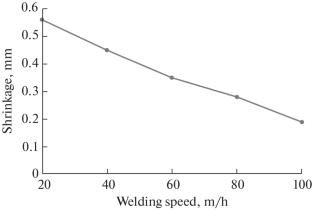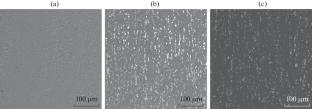Al-Ca-Mg合金板材的激光焊接
IF 0.3
Q4 METALLURGY & METALLURGICAL ENGINEERING
引用次数: 0
摘要
摘要:研究了锆钪合金Al-Ca-Mg激光焊接接头的力学性能。对于无缺陷焊缝,接头的抗拉强度为母材强度的0.70-0.72。拉伸试验时,熔合区发生断裂。然而,当存在气孔等焊缝缺陷时,抗拉强度下降到母材强度的0.54-0.59,焊缝金属内部发生断裂。本文章由计算机程序翻译,如有差异,请以英文原文为准。


Laser Welding of Al–Ca–Mg Alloy Sheets
Abstract—The mechanical properties of the laser welded joints of Al–Ca–Mg sheets alloyed with zirconium and scandium are investigated. The tensile strength of the joints is 0.70–0.72 of the strength of the base metal for defect-free welds. Fracture occurs in the fusion zone during tensile testing. However, when weld defects such as porosity are present, the tensile strength drops to 0.54–0.59 of the strength of the base metal, and fracture occurs within the weld metal.
求助全文
通过发布文献求助,成功后即可免费获取论文全文。
去求助
来源期刊

Russian Metallurgy (Metally)
METALLURGY & METALLURGICAL ENGINEERING-
CiteScore
0.70
自引率
25.00%
发文量
140
期刊介绍:
Russian Metallurgy (Metally) publishes results of original experimental and theoretical research in the form of reviews and regular articles devoted to topical problems of metallurgy, physical metallurgy, and treatment of ferrous, nonferrous, rare, and other metals and alloys, intermetallic compounds, and metallic composite materials. The journal focuses on physicochemical properties of metallurgical materials (ores, slags, matters, and melts of metals and alloys); physicochemical processes (thermodynamics and kinetics of pyrometallurgical, hydrometallurgical, electrochemical, and other processes); theoretical metallurgy; metal forming; thermoplastic and thermochemical treatment; computation and experimental determination of phase diagrams and thermokinetic diagrams; mechanisms and kinetics of phase transitions in metallic materials; relations between the chemical composition, phase and structural states of materials and their physicochemical and service properties; interaction between metallic materials and external media; and effects of radiation on these materials.
 求助内容:
求助内容: 应助结果提醒方式:
应助结果提醒方式:


